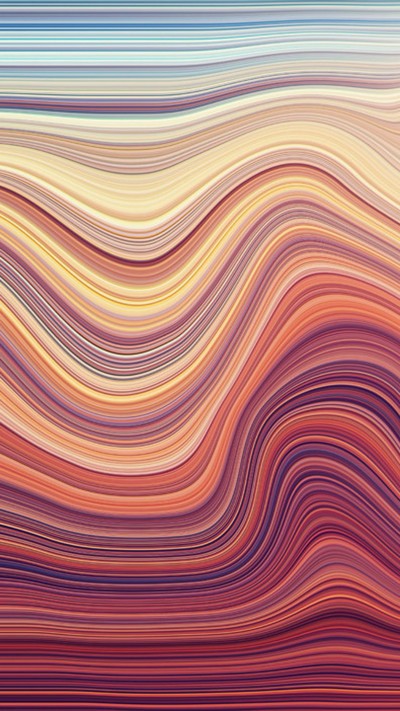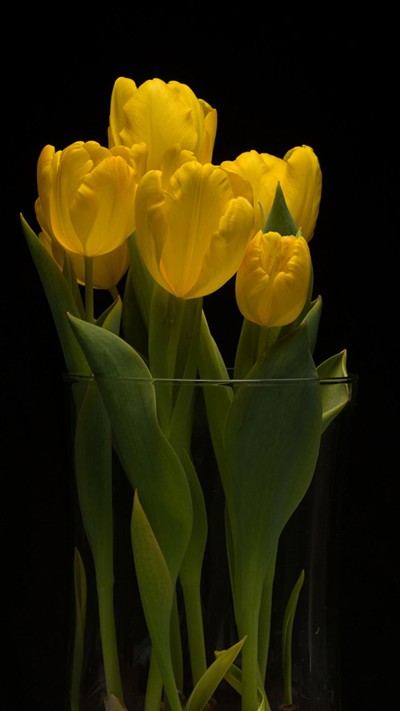
If you could cut out a colorful rectangle out of the Internet and hang it on your wall, what would it look like? That’s the question raised by Electric Objects, a high-definition, web-connected screen that was designed to bring digital art into people’s homes for display.
It’s also a question that challenges the way people have long thought about art in the home, which is still largely limited to static images and standing objects—things like sculptures, paintings or prints, drawings, maps, and photography. For $499, Electric Objects offers two relatively novel qualities: motion and light. Not the kind you get on a flashing television screen or bright laptop monitor but subtle and deliberate.
Or, you know, absolutely ridiculous.
This cat is killing it right now on @electricobjectshttps://t.co/esaVFqiBlJpic.twitter.com/fgOmB5xDZD
— Jake Levine (@jrlevine) September 16, 2015Animations are popular among the people who use Electric Objects. The cat filing its nails in the GIF, above, is the most popular display in the past week. This is funny but not surprising. When you can change the art on your wall with the swipe of an iPhone, there’s more room for fleeting silliness.
The cofounders of Electric Objects shared data with me that shows which images have been displayed longest—in the past week, and the past month.
“It's a proxy for staying power, which is something we’re fascinated by,” said Jake Levine, one of the cofounders. “We measure success for a piece on the basis of how much depth it has, how likely is a customer to live with it for an extended period of time? In many ways it's a response to the fleeting manic nature of the web as we know it.”
Extended interaction with art is also a more nuanced way to think about what popularity means in an artistic context. Often a work is deemed popular when it is widely recognized or seen in-person by a large number of people. The Louvre gets some 9 million visitors a year, and many of them shuffle past the crowd that seems perpetually gathered around the Mona Lisa. In a museum setting, it’s hard to quantify how much time an individual person spends engaging with a particular work. Encountering art is an intimate act, even in public.
At home, interactions with art aren’t usually measurable at all. (There’s no way for anyone to know, without me telling you, that in my periphery as I write this sentence is a framed illustration of a dodo bird and a photograph I took of the fire escapes along Macdougal Street.) With Electric Objects, it’s possible to catch a glimpse of how people are integrating art into their personal spaces. For example, the most popular image across most measures is a GIF of a giraffe chewing endlessly.
“The fucking giraffe,” Levine said. “First of all, it’s hilarious. Second, the animation is subtle and not distracting. And for the home, this is an important characteristic. Third, and maybe the most interesting, there’s no visible loop. It has no beginning or end. The giraffe appears to be just chewing. It’s not a video of a giraffe with a beginning and end, it’s just a giraffe.”

It’s just a giraffe, but the appeal is understandable. It makes sense, too, that people would gravitate toward animation in this format. The Electric Objects cofounder Zoë Salditch’s personal favorites include artists like Dina Kelberman—“Dina’s GIFs are literally beautiful piles of extension cords,” Salditch said—and Rick Silva, who explores connections and collisions between the digital and the natural worlds. “And ultimately,” Salditch says, “how to bring harmony between the two even if they seem at odds with one another ideologically. These ideas are some of the most salient for me.”
Among all Electric Objects users, the most popular GIFs in the past month include a steaming cup of coffee, an Oregon waterfall, and a popping bonfire on a beach at dusk—all scenes that seem equal-parts video installation, Harry Potter photography, and that scenery channel from Back to the Future II.


Salditch pointed me to a tweet by a man who described wanting to hang an E01, the name for the device Electric Objects sells, in a windowless office so he could see the sky.
(Hooks up @ElectricObjects EO1 to monitor instagram tag "sunset") (Installs it in his windowless office with an ambilight) Problem solved?
— ▻ (@raihan_) September 22, 2015“On our computers, our tablets, our phones, we’re so used to media objects that have a beginning and end,” Levine told me. “But you don't watch Electric Objects in the same way. It just lives in the background.” In this hyperlapse of London, which was the 10th most popular on display across all users in the past month, you begin to notice details: the jaywalkers streaking across the bridge, puffs of smoke coming from chimneys, a flag whipping back and forth.

Electric Objects also recontextualizes Internet imagery in a broader artistic context. An animation of water beneath unmoving clouds might be pretty in passing when you scroll past it on a laptop or iPhone, but hanging on a wall, it suddenly brings to mind a whole class of surrealists and their creations—pieces like René Magritte’s “L'empire des lumières.” Which is another way of saying: Art is meaningful not just in and of itself but because of where you put it. “It feels magical and science fiction in a way that we've always imagined,” Levine told me.

Along with GIFs, there are stills with staying power among the Electric Objects set—like “Sediment Symphony,” which, to me, evokes Edvard Munch, and is one of the most popular works on display in the past week:

Pieces designed explicitly for the device, from a program called “art club,” are often among the most popular.


Electric Objects is still in it infancy, finding its way in a space that is largely of its own making. (The phenomenally successful Kickstarter campaign that launched the company began just over a year ago.) Now, Levine and Salditch face more nuanced questions, like what happens to art that relies on a hosted environment or third-party data? They’re only beginning to unpack some of these complexities. “It's super interesting,” Levine said. “I think we're mostly still learning.”